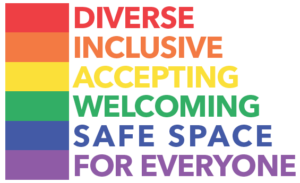Giving Thanks at the Table
By Kristina Ward, MAS-MFT, LMFT | NOAH Marriage & Family Therapist
Family life is usually busy: with mornings consisting of getting kids moving and out the door, sometimes even fed, and afternoons that include sports, homework, and general catch up. Family meal times have frequently become an occasional activity, just for the days of the month that aren’t horribly hectic and on the run. Between work, children, social media, and other activities, family meal time is often a chore to be avoided. But, the benefits of a regular family meal time is measurable. Studies have shown that regular family meal time together improves the overall outcome of relationships.
In couples with no children, be they pre, post, or no children, regular meals together reduce the levels of conflict within the relationship. Couples are more frequently able to resolve, come to a compromise, or even agree to disagree. The couple increases the level of friendship and companionship during the time spent together. In families with young children, the meal time together has the same protective factor in the couple relationship and improves the overall relationships at the meal allowing for increased conversation and interaction. As parents model communication and interaction, these young children improve in the ability to listen and respond. Additionally, the conversation at family meals leads to developmental changes in the children. Regular conversation, including and around, young children helps to develop the child’s vocabulary. In families with older children, family meal time is a time to learn the family culture and develop a sense of “who I am” as part of the family system.
Family meal time has protective factors on the mental health of the family members as well. Allowing children to express his or her thoughts in an opportunity for self-esteem to improve, improve school-related activities, and for the child-parent bond to increase, which in turn decreases the risk of early sex in pre-teen and teenage relationships. Another protective factor observed in regular family meals is the reduction in patterned disordered eating (which can lead to eating disorders), reduce the risk of substance abuse, and an improvement in health. Additionally, multiple studies from Europe to Japan to the US have shown regular family meals decreases depression in all age groups.
Family meals do not need to be every day or every dinner. Family meals can be breakfast together on Saturday mornings, Friday night pizza, or Sunday brunch. Scheduling the regular meal times and the family expectation that everyone will be there is the important factor. If the kids have late start on Wednesday mornings, schedule breakfast to be at 6:30am before parents have to leave for work. No time to cook, have cold cereal! Make meal times a social event. Couples can make the meal together, eat, and clean up together. Parents can take turns teaching the children how to cook and prepare meals. The goal is to increase the moments of regular togetherness.
Tell me and I forget, teach me and I may remember, involve me and I learn.
Benjamin Franklin
Sharon M. Fruh, Jayne A. Fulkerson, Madhuri S. Mulekar, Lee Ann J. Kendrick, and Clista Clanton. (2011). The Surprising Benefits of the Family Meal. The Journal for Nurse Practitioners. January 2011, 7 (1) 12-22.
Megan E. Harrison, Mark L. Norris, Nicole Obeid, Maeghan Fu, Hannah Weinstangel, and Margaret Sampson. (2015). Systematic review of the effects of family meal frequency on psychosocial outcomes in youth. Canadian Family Physician. February 2015, 61 (2) e96-e106.


